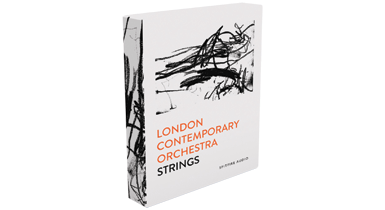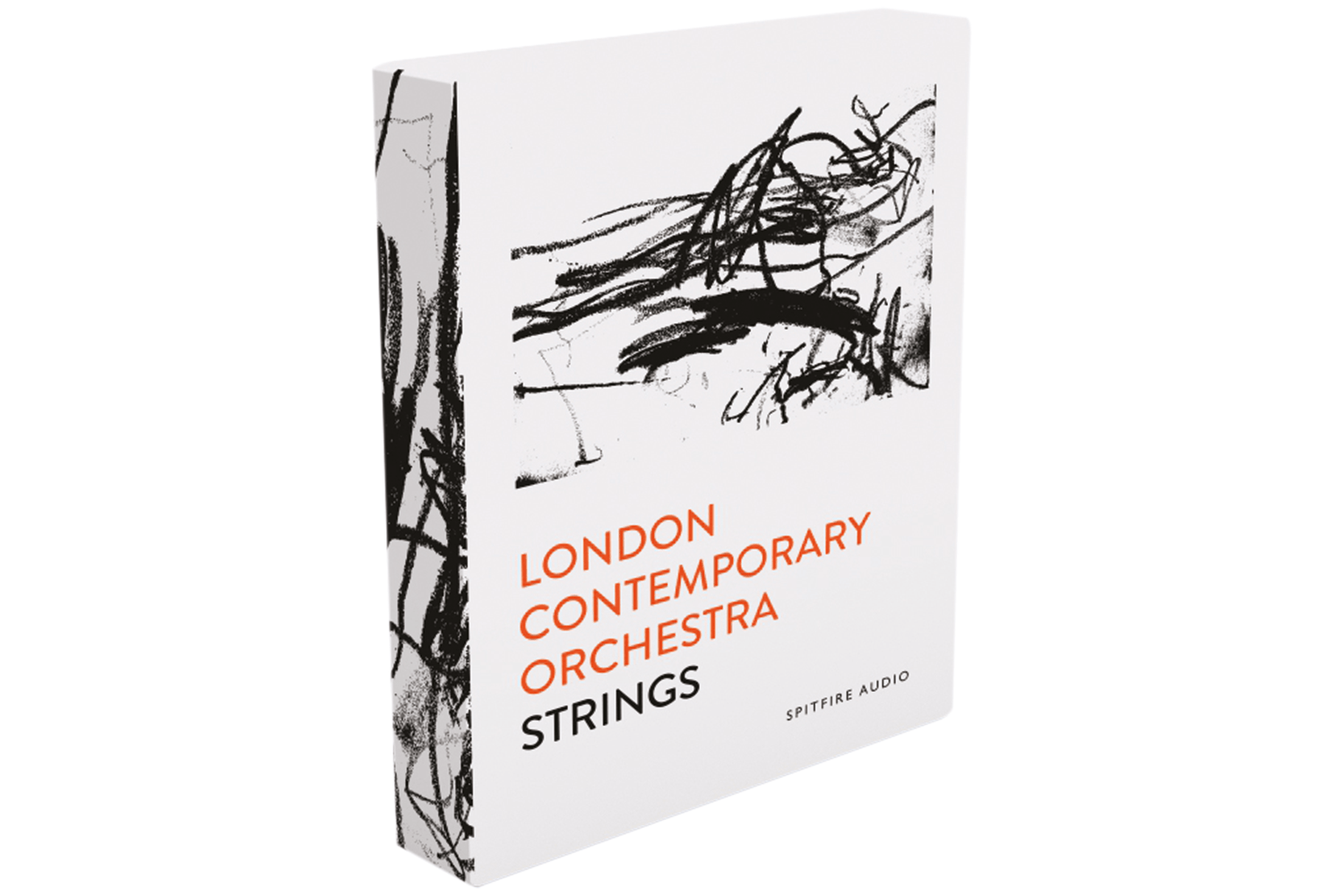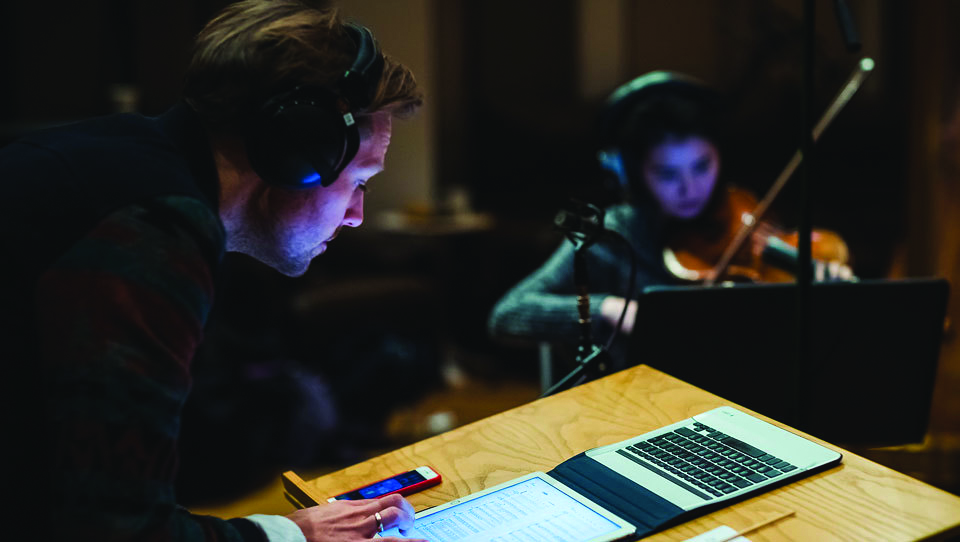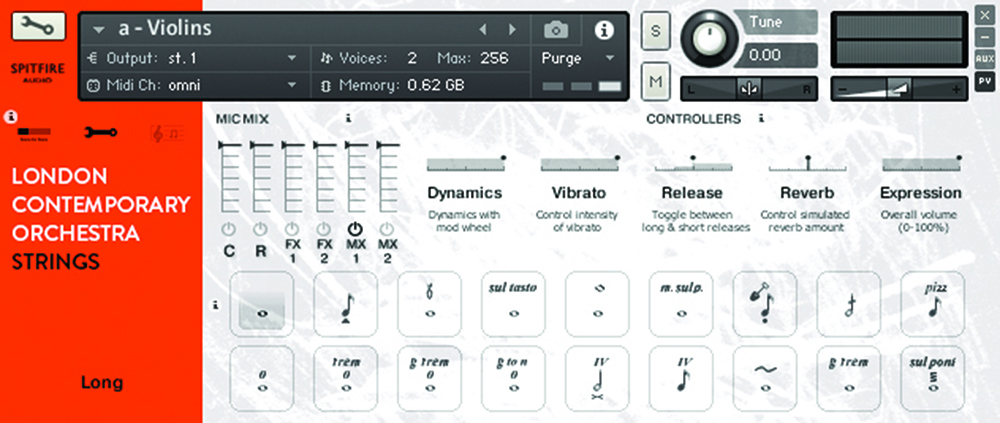London Contemporary Orchestra Strings Review – Outstanding Sonic Gold
In another twist from the norm, orchestral-sampling pioneer Spitfire Audio brings us a library with modernist tendencies. Dave Gale gets contemporary with strings… Details Manufacturer Spitfire Audio Price £299 Contact Spitfire Audio Email via website Web www.spitfireaudio.com Orchestral sample libraries have very much come of age. Spitfire Audio has impressed us with both full orchestral […]

In another twist from the norm, orchestral-sampling pioneer Spitfire Audio brings us a library with modernist tendencies. Dave Gale gets contemporary with strings…


Details
Manufacturer Spitfire Audio
Price £299
Contact Spitfire Audio
Email via website
Web www.spitfireaudio.com
![]()
Orchestral sample libraries have very much come of age. Spitfire Audio has impressed us with both full orchestral libraries and Albion series, and here, it offers another take on sampling orchestral instruments, which will be of particular interest to producers and soundtrack composers alike.
Intimate recording
There’s a certain level of intimacy and abstractness to the sampling. In terms of forces, we are talking about six violins, four violas, three celli and two double basses. Immediately, there is a level of intimacy here which differs from most other orchestral libraries, and a small dry room was used for this sampling session.
Two mic positions are available –close or room – but with some other interesting alternatives. Apart from the option of two stereo mixes, there are also two printed, analogue-FX based mixes – which can be fed into the overall output, as every mix element is under its own fader control. We’ll come back to these later, as there are some excellent surprises to be had here.
In common with the LCO’s manifesto, there’s a healthy dose of ‘suck it and see’, with some of the articulations offered being almost improvised in form. There is the usual plentiful supply of long and short notes, but in both cases, words like ‘vivid’ have been added to the patch description.
It’s an apt description, as it certainly differs from other Spitfire patches and offers a refreshingly different angle – which is pure, close and full of tonal colour. There are also some great ‘no vib’ patches, based on open strings, offering an almost Renaissance sense of purity that you don’t tend to hear very often.
“There’s a level of intimacy here which differs from most other libraries – a small dry room was used for sampling”
There are also articulations you wouldn’t normally come across. A case in point is Woozy Vibrato which, as the name implies, is a slow vibrato with almost drunk inflection. It’s got that superb sense of a warped record on an old player. There’s another very interesting set of ‘slackened’ patches. These sound as though the string has been slackened to such a degree that the pitch modulates to the extreme of a semitone, once the rosin of the bow digs in.
Available in both long and short forms, there’s a bite at the front of the note, especially in the shorter version, which offers a wonderful high-end colour, heard in many 20th-century settings, where the heel of the bow is used to apply harsh accent. The body of the instrument rattles with HF colour, and being so dry, cuts beautifully.
As Spitfire looks for ever-more- interesting colours, there’s great use of granular tones and tremolo effects. The granular elements sound suitably scratchy, as the bow really digs in, but with far less arm movement. Also added across several patches are tremolos, one of which is described as ‘irregular’. This has a wonderful humanistic quality, which is quite random in tone, and just perfect for adding that slightly obscure element to your score. It’s certainly heading more towards the tension-driven side of musical composition, but could add some terrific colour for use across the board, especially if processed further.
There’s the usual degree of uniformity across instruments, but some articulations are specific to certain departments, with the lower strings offering fewer options, but still keeping all the nuts and bolts you really need.

There’s plenty of MIDI CC control of the samples, with the standard Spitfire layout of five MIDI controllable elements, but this can differ if you move to the individual patch level. Above all, what you really need will be available, when you need it.
There are also extended options beyond the main patch set, which offer some more ‘normal’, intimate string tones. However, the lack of legato patches is a great shame. There’s a wonderful purity with this library, though, as it fills a niche between ensemble size and musical style. It’s not a chamber orchestra nor a quartet: and in a similar manner, it’s not your regular library, stylistically.
It could have a wide rabnge of applications, especially in certain TV settings, which is why I feel the lack of legato patching is such a shame; you might want to break into that melody in the cellos, and you’ll have to just work with the long versus short patching to get it to work.
Mixing elements
A really nice feature with this library is the addition of six mixer-channel elements, which can be blended to offer a terrific complement of the various sampled channels. Starting with the obvious, there are faders for both close and room mic’ing. In keeping with the library’s overall concept, the room has a wonderfully short ambience. It’s crisp and bright, but not overbearing. We also have two imprinted ‘FX’ channels, which have had analogue FX applied at source.
The first of these is full of discrete impurity, with a very narrow stereo spectrum; while the second is vastly different – it sounds tape-based and grainy with it; there’s a superb harshness in the higher mids which will cut through a mix like a knife. It actually sounds very reminiscent of a Mellotron, but with greater quality and depth to the overall timbre.

Finally, two ‘full’ mixer channels offer a basic full mix and a ‘pumped’ mix version, doubtless full of compression.
The use of comprehensive but simple-to-use sample channelling is nothing new to Spitfire. But somehow in this setting, it feels really alive. The difference in tonal components is such, you can reduce the harshness of the FX sample channels by bleeding in small elements of the close or room mics, and this works so well.
In line with Spitfire’s other libraries, the Ostinatum feature is included in LCO strings, too, which helps the user build up patterns to alleviate programming within the DAW, or having to play the same phrase over and over.
Do I really need this?
This is a library which is more leftfield than just about all other orchestral string libraries. It sets out to offer a different palette, which is intimate, considered and creative in an almost ‘improvised’ way. It also offers some excellent sonic highlights, many of which have had to be named with suitable adjectives, because the good old-fashioned Italian terms just wouldn’t work.
However, you need to be aware that you can’t go into a contract with this library thinking it will cover the full gamut of basic articulations, because you’ll find some elements missing. As such, if you need intimate strings, which are more de rigueur, you could look at either Spitfire’s Chamber Strings, or even the even more stripped-out Sacconi Strings – Quartet.
The contemporary conclusion
This is a really interesting and different library and it offers vast articulation options. It won’t be for everyone, being so intimate, but it is beautifully creative, and offers a great palette. Some of the patches are quite ‘out there’, but lend themselves well to soundtrack-based work, or more innovative and creative composition/songwriting work. But if you’re into commercial pop, you’d be better served by one of Spitfire’s more mainstream string libraries.
Key features
- Ultra-modern string library
- Small string forces, in a unique setting
- Recorded in a very dry environment
- FX setting alternatives, applied during sampling
- Requires Kontakt/Kontakt player (free download)
- 28.19GB of disk space required for uncompressed samples
Alternatives
The LCO String library is a little bit out on its own, owing to its vast array of different articulations drawn from the classical world of contemporary stylistic playing. If you’re after something more chamber-like (that isn’t from the obvious other choices from Spitfire), Vienna Symphonic Library has some helpful offerings, both in its Solo Strings library and chamber-based Appassionata Strings.
There’s been a growing feeling in recent years that the VSL libraries are starting to feel a little tired, and would benefit from some sprucing up – certainly sonically, the VSL has moments when you can clearly hear that you are listening to samples. The Spitfire libraries are more convincing in this regard, and (strangely) are marginally cheaper when stacked against the full VSL libraries: so the choice could be a bit of a no-brainer.
